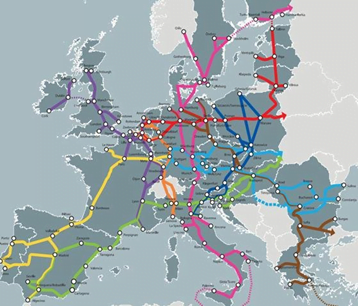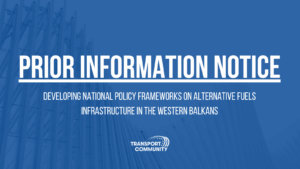The Common Transport Policy dates as far back as the Treaty of Rome (1957). Initially focused on issues like market opening and freedom to provide services, it has developed an infrastructure component that has grown more and more important over the last decades.
The trans-European networks (TEN-T) are specifically mentioned in the Treaty on European Union (1992).
TEN-T is a Europe-wide network of roads, railways, inland waterways, maritime routes, ports, airports, and multimodal terminals. It comprises a dual-layer structure, with a Comprehensive Network connecting all significant urban centers in the Union and a Core Network consisting in the most important links. TEN-T Regulation lays down detailed quality requirements for each transport mode that should be met by 2030 (for the Core Network) and 2050 (for the Comprehensive Network).
The Core Network Corridors are a key governance tool for ensuring the coordinated implementation of TEN-T, enabling Member States to achieve a synchronised approach for addressing bottlenecks and missing links.
Currently based on Regulation (EU) No 1315/2013, the TEN-T policy is undergoing a revision process aiming to increase the focus on network quality and to align it with the major strategic orientations set-out by the European Green Deal and further tranposed in the Sustainable and Smart Mobility Strategy.
By closing infrastructure gaps and removing barriers to transport and trade, the ultimate purpose of the TEN-T development policy is to strengthen the social, economic, and territorial cohesion of the Union by creating a high-quality network uniting people and communities in a smart, safe, green, resilient and sustainable manner.






